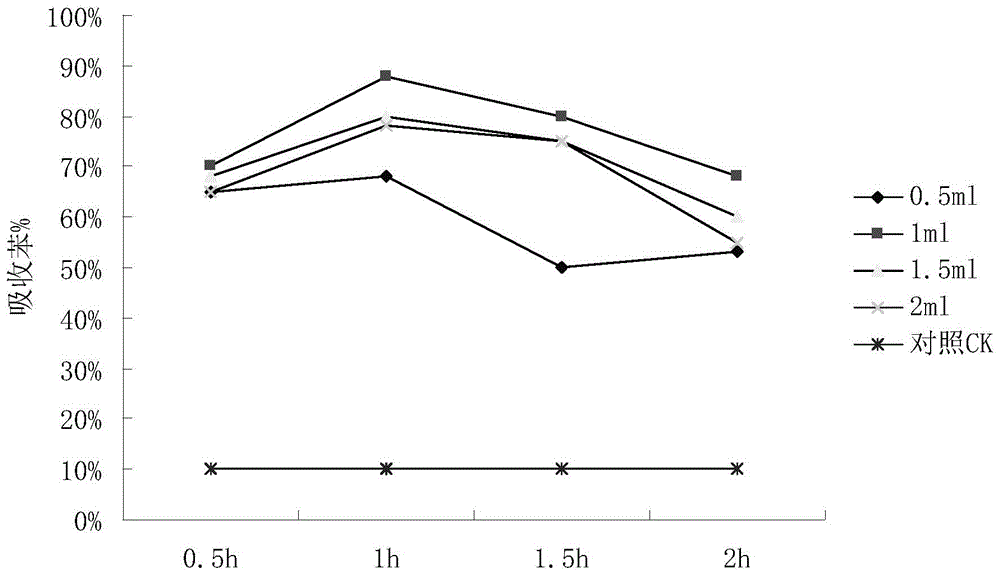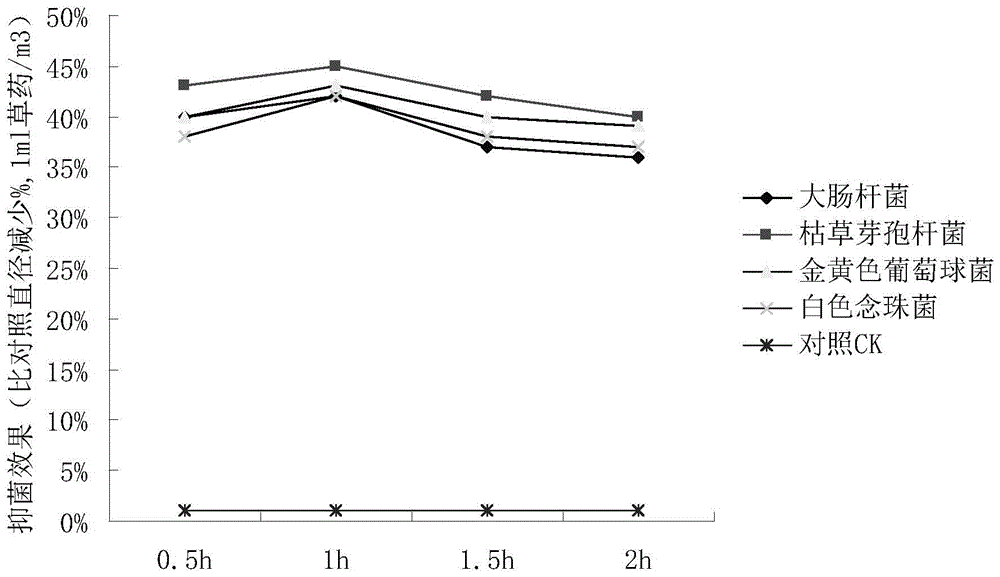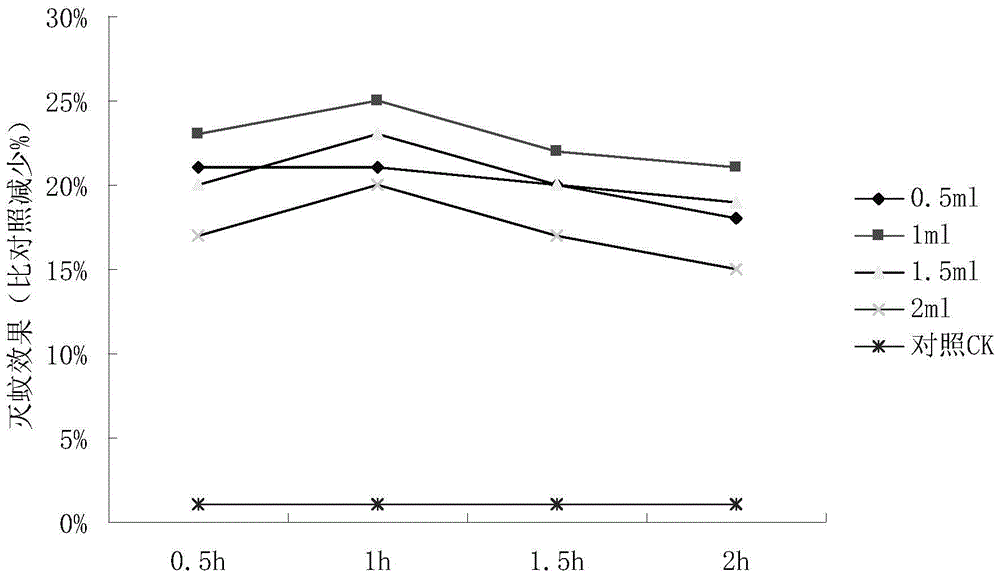A Herbal Medicine for Removing Indoor Benzene Pollution
A technology of herbal medicine and Artemisia annua, applied in the direction of resistance to vector-borne diseases, chemicals for biological control, biocides, etc., can solve problems such as benzene pollution
- Summary
- Abstract
- Description
- Claims
- Application Information
AI Technical Summary
Problems solved by technology
Method used
Image
Examples
Embodiment 1
[0030] The herbal medicine of removing indoor benzene of the present embodiment is according to the composition of weight ratio:
[0031] Artemisia annua 30% camphor leaves 20% yellow kudzu leaves 20% white crane lily 10%, Sanwei sunflower 10%, ivy 10%.
[0032] For example, 1kg of the mixture contains 300g of Artemisia annua leaves, 200g of camphor leaves, 200g of kudzu leaves, 100g of white crane lily, 100g of Sanwei sunflower, and 100g of ivy.
Embodiment 2
[0034] The preparation method of the herbal medicine of the present embodiment specifically has the following steps:
[0035] 1) Preparation: Collect fresh Artemisia annua (stem, leaf), camphor leaves, kudzu leaves, crane lily (stem, flower, leaf), Sanwei sunflower (stem, leaf) and ivy (stem, leaf), Wash, pulverize and dry separately; all raw materials are pulverized into 100 mesh.
[0036] 2) Mix the powder prepared in step 1) according to the following proportions to obtain 1kg of the mixture:
[0037] According to the weight ratio, take 300g of Artemisia annua, 200g of camphor leaves, 200g of kudzu leaves, 100g of white crane lily, 100g of Sanwei sunflower, and 100g of ivy.
[0038] 3) After sterilizing the mixture obtained in step 2) (the sterilization method is radiation sterilization), the mixture is heated and dried at 50-70° C. for 2-3 hours.
[0039] 4) After soaking the raw material mixture with alcohol, distill and collect the distillate; the alcohol is obtained b...
Embodiment 3
[0043] The product that embodiment 2 obtains is measured to the benzene absorbing capacity:
[0044] Measured in a closed reaction chamber. Inject 10 μL of benzene solution into the airtight reaction chamber with a nebulizer, and turn on the built-in fan. Let the benzene solution completely volatilize into an aerosol, and use an Agilent 6890N gas chromatograph (Agilent, USA) for analysis of benzene series. Measure the benzene concentration every 0.5h for a total of 2 hours. The initial concentration of benzene is 12.5-32.8mg / m 3 . Then the herbal medicine was sprayed into the closed reaction chamber, the method was the same as before, and the test was repeated 3 times. Convert the result to the amount of benzene absorbed per unit dosage and unit time, and the unit is mg / (m3·h). Spray water for comparison. (Such as figure 1 ).
PUM
 Login to View More
Login to View More Abstract
Description
Claims
Application Information
 Login to View More
Login to View More - R&D
- Intellectual Property
- Life Sciences
- Materials
- Tech Scout
- Unparalleled Data Quality
- Higher Quality Content
- 60% Fewer Hallucinations
Browse by: Latest US Patents, China's latest patents, Technical Efficacy Thesaurus, Application Domain, Technology Topic, Popular Technical Reports.
© 2025 PatSnap. All rights reserved.Legal|Privacy policy|Modern Slavery Act Transparency Statement|Sitemap|About US| Contact US: help@patsnap.com



